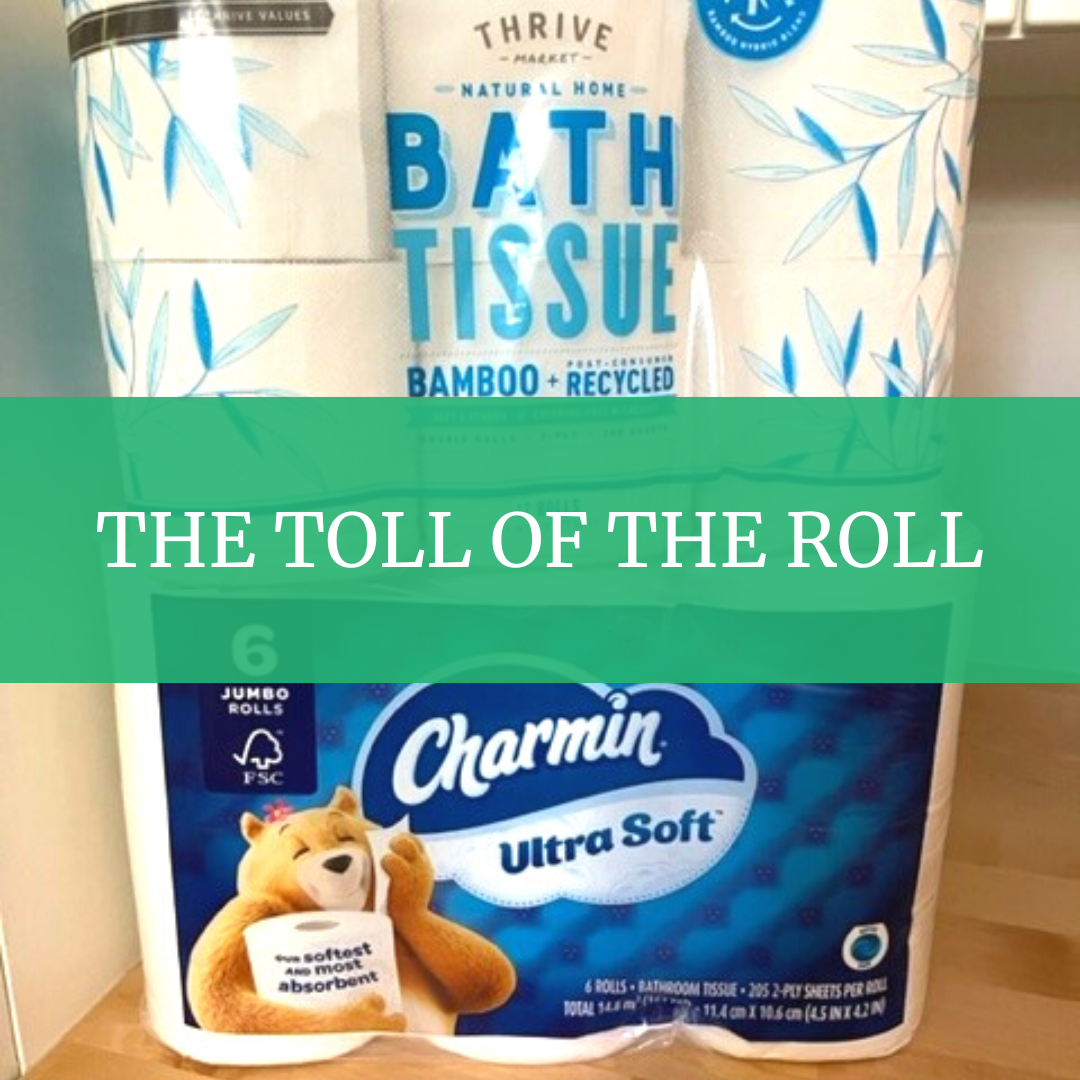The Toll Of The Roll
By James McCurdy
Our most sacrosanct duties have always been addressed with pragmatic ingenuity—leaves, grass, sheep’s wool, newspaper, the Sears Roebuck catalogue—but the most remarkable progenitor of primitive toilet paper comes from ancient Rome in the first century A.D. Necessity being the mother of invention, Romans divined an exceptionally sustainable tool for cleaning their behinds, a sponge attached to a stick called a xylospongium. Indeed, primordial environmentalists subject to the public latrines all reached for the communal sponge. Though the sponge was sometimes employed far from the bum. The archetypal instance concerns a forlorn and dejected gladiator who visited the restroom, promptly shoved the stick down his throat, and died only moments later. Despite his obtuse suicide weapon, history has little more to say about the hopeless hero. I like to think our inconsolable warrior had an ultimate literary divination just before his final breath. In the gloomy prophecy, our warrior recognized the horribly crude metaphor his death would stand for two millenniums hence as exemplar of the perverse toll toilet paper would come to reap on the environment.
Though toilet paper was widely available in China by the early 14th century, America didn’t catch up till 1857 when Joseph Gayetty introduced his aloe-infused “Medicated Paper, for the Water-Closest.” What we would most likely recognize as facial tissues, Gayetty’s innovation was sold in packs of 500 wipes for 50 cents. Like any great entrepreneur, Gayetty was equal parts prideful and vainglorious, emblazoning his name on every sheet he sold. But Gayetty’s branded invention yielded limited success as Americans deemed toilet paper a wanton frivolity with the Sears Roebuck catalog available free of charge. The next TP innovation came in 1890 when the Scott brothers invented the toilet paper roll, but Americans were too bashful and genteel to discuss their secret movements, let alone publicly purchase a product to aid them. Until 1928, toilet paper was marketed as a medical item that slowly gained acceptance due to technical advances in plumbing. All of that changed when Charmin, a brand currently associated with portly bears extolling buyers who “enjoy the go” on their “ultra-soft” products, began marketing their rolls with bodacious feminine silhouettes. Since the branding scheme, Americans have yet to open a Sears catalog.
Akin to far weightier American perils, absurdly soft toilet paper became an irreplaceable birthright through the magic of marketing. The decades-long sanctification process solidified TP as a quotidian necessity, and every modern Yankee bottom seized with expectation at the culminating task. Recall your most recent conversation colored with rebukes and denunciations simply because a coddled bottom was the helpless subject of barbaric “two-ply.”
Perhaps unsurprisingly, America became the largest consumer of toilet paper in the world, the average American uses 141 rolls of toilet paper a year—57 squares a day, and the multibillion-dollar toilet paper industry has few qualms about the treacherous tree-to-toilet pipeline. The most prolific producers find much of their raw materials in the largest intact, carbon-dense forest on the planet: Canada’s boreal forest.
Home to hundreds of indigenous tribes, the boreal forest is one of North America’s greatest climate regulators. Disappointingly, the Canadian government condones logging over a million forested acres per year; releasing a conservatively estimated 26 million metric tons of carbon into the atmosphere. Some of this injudicious logging—90% of which is clearcutting—is in service of the ungodliest TP corporations.
Toilet paper is made from “pulp,” a malleable fiber which is contrived by soaking wood slabs in various chemicals for 3-hours. Pulp is then washed and bleached for TP’s palatable color, mixed with an exorbitant amount of water to create paper stalk (99.5% water, .05% pulp), set to dry, rolled, packaged, and sold. Each roll created this way takes 37 gallons of water, 1.5 pounds of wood, a gallon of bleach, and emits three times as much carbon compared to more sustainable alternatives.
If the climate crisis rested simply on eradicating TP’s entrenched role, we would be equally lucky and blighted. Fortunately, one’s restroom standards need not shift to make a contextually marginal, but nonetheless meaningful difference. In the NRDC’s most recent report on environmentally friendly toilet paper, experts rated the sustainability of prominent brands. Who Gives a Crap and Green Forest were awarded an A+, Trader Joe’s Bath Tissue and Natural Value were given an A, while big brands like Amazon Basics, Angel Soft, and Charmin earned an F. The most sustainable toilet paper is made from recycled paper, and some commendable options are made with Bamboo.
Readers might dismiss the gravity of toilet paper analysis within an issue as seismic and empirically unequal as climate change. These purists are half-right. But much like our glum gladiator plunging the communal sponge to the depths of his trachea, we don’t have to consume this way. Toilet paper made from pulp exists long before we slide it off the shelf and long after we bludgeon it with earthly emission. The unquestioned consumption of unsustainably sourced toilet paper epitomizes a fundamental truth about climate change: We squander our most precious resources for the most ephemeral conveniences, and don’t think twice about it. While the toilet paper industry is not the source of the climate crisis, its mercenary logic is.

